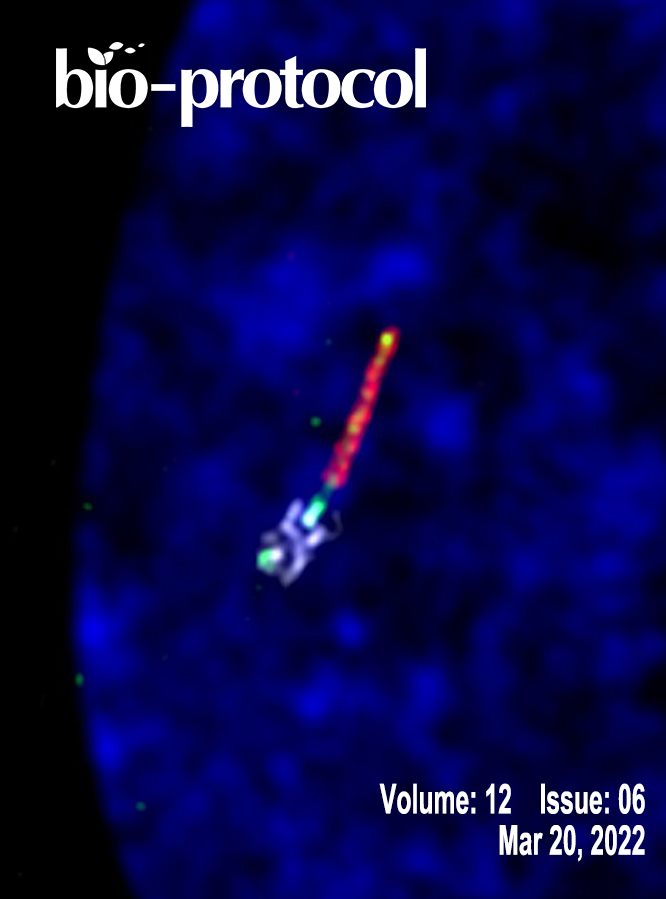Publication from Centrosome & Cell Division Cycle project group on cover of Bio-protocol

A 3D-superresolution microscopy image (3D-SIM) of the cell’s sensory organelle, the primary cilium, obtained by the Centrosome & Cell Division Cycle project group was selected for the cover of the latest issue of Bio-protocol.
In this issue, Frikstad and colleagues report a detailed protocol for the analysis of centrosomes by 3D-SIM. The method was applied in two earlier reported studies on functional analysis of disease causing mutations in centrosomal proteins published in the prestigious journals Cell Reports and eLife.
Centrosomes form the microtubule scaffold of the primary cilium that senses several important developmental signaling pathways (including Hedgehog and WNT signaling pathways), and are the main organizers of the microtubule cytoskeleton in the cell body of many cell types. Most prominently, they have a predominant role in cell division to ensure balanced segregation of the genetic material. Structural, numerical and functional aberrations of centrosomes are a hallmark of cancer. Notably, several cancer forms exploit developmental pathways sensed by the primary cilium to drive tumor proliferation. Since mutations in centrosomal or ciliary proteins disturbing cilia function are also a cause of a collectively large group of rare developmental diseases (ciliopathies), a better molecular understanding of these genetic diseases will foster development of new cancer therapeutics. Such innovative strategies may either interrupt high-jacked developmental signaling pathways or more specifically target selective microtubule assemblies. The detailed protocol provides a swift approach for structure-function analysis of disease-causing mutations in selected proteins that impinge on the tiny but mighty organelle.
Links:
3D-Structured Illumination Microscopy of Centrosomes in Human Cell Lines.
Frikstad KM, Schink K,O, Gilani S, Pedersen LB, Patzke S.
Bio-protocol. 2022 Mar 20; 12(6): e4360. doi: 10.21769/BioProtoc.4360
CEP78 functions downstream of CEP350 to control biogenesis of primary cilia by negatively regulating CP110 levels.
Gonçalves AB, Hasselbalch SK, Joensen BB, Patzke S, Martens P, Ohlsen SK, Quinodoz M, Nikopoulos K, Suleiman R, Damsø Jeppesen MP, Weiss C, Christensen ST, Rivolta C, Andersen JS, Farinelli P, Pedersen LB.
Elife. 2021 Jul 14;10:e63731. doi: 10.7554/eLife.63731.
A CEP104-CSPP1 Complex Is Required for Formation of Primary Cilia Competent in Hedgehog Signaling.
Frikstad KM, Molinari E, Thoresen M, Ramsbottom SA, Hughes F, Letteboer SJF, Gilani S, Schink KO, Stokke T, Geimer S, Pedersen LB, Giles RH, Akhmanova A, Roepman R, Sayer JA, Patzke S.
Cell Rep. 2019 Aug 13;28(7):1907-1922.e6. doi: 10.1016/j.celrep.2019.07.025.
Centrosome & Cell Division Cycle Project group, headed by Sebastian Patzke:
https://www.ous-research.no/patzke/
